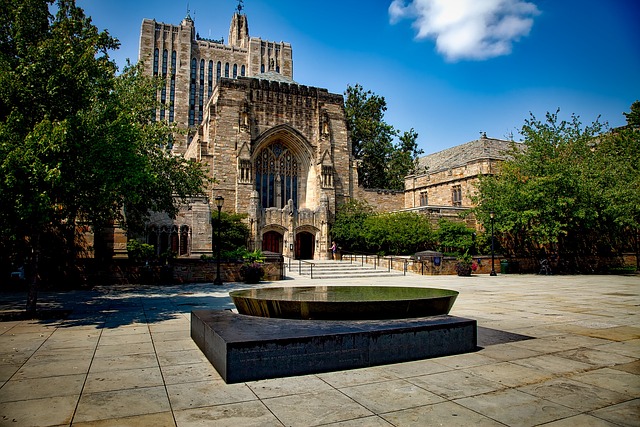
In Uncertain Times, Nonprofits Must Keep Up With Legal Compliance
04.11.2025 | Linda J. Rosenthal, JD

In 2020, amid the chaos and disruption of the global COVID-19 pandemic, a tragic incident involving one man on the streets of Minneapolis triggered significant – and way overdue – action on long-simmering racial tensions at America’s institutions of higher education.
The nation’s colleges and universities, many of which were founded decades or even hundreds of years ago, have largely been bastions of white privilege. They continued to be weighed down with the baggage of bygone eras, bearing the names and showcasing the images of the rich and powerful men who founded, funded, and controlled them.
In recent years, though, the harsh truth about many of these elite individuals has been uncovered. Quite a few espoused ideas that are abhorrent to modern sensibilities. Many were active in propagating these notions and carrying out plans to marginalize, oppress, and exclude significant numbers of people.
Previously, protests had been mounted, but successes were sporadic. See Renaming university buildings with racist namesakes is an uphill battle (February 14, 2017) Ryan Brooks, USA Today.
But a few examples of bold action stand out. In 2017, for example, Yale University approved the change of name of one of its twelve residential colleges, Calhoun College. This was a reversal of a decision the prior year to retain the “honor’ bestowed on John C. Calhoun, the South Carolina antebellum leader of the pro-slavery and secessionist movement. See Letter of the Committee to Establish Principles on Renaming (November 21, 2016); and Yale changes Calhoun College’s name to honor Grace Murray Hopper (February 17, 2017) Yale News.
In 2020, the killing of George Floyd sparked a significant wave of action on the (controversial and complex) issue of retaining or tossing out historical names and monuments dotting the higher education “landscape.” See for instance: Reconsidering the Past, One Statue at a Time (June 25, 2020) Sarah Mervosh, et al, The New York Times [“From Virginia to New Mexico, protests over police brutality have brought hundreds of years of American history bubbling to the surface”]; and What’s in a Name? After Years of Student Activism, Universities Rename Campus Buildings (July 16, 2020) Sara Weissman, diverseeducation.com.
See also Controversies over Confederate monuments and memorials are part of an overdue racial reckoning for America, says Stanford historian (July 16, 2020) Melissa De Witte, Stanford News.
If there was doubt of the direct cause-and-effect of the George Floyd murder on the notable surge in 2020 in “denamings” at America’s educational institutions, the president of Princeton University put that to rest by his dramatic statements and actions that year.
A few years before, there had been a bitter battle at Princeton over whether to remove the name of President Woodrow Wilson (also a former president of the university) from a prestigious graduate department. In 2016, the Princeton Board of Trustees voted to retain the name, despite ample evidence that Wilson was a “staunch racist.” However, in June 2020, the university president, with the consent of the Board of Trustees, did an about-face, announcing that the earlier decision had been a wrong call. See:
In a relatively short time, the nation’s universities have developed a treasure trove of valuable guidance and insight on the issues regarding honoring historical figures. Of course, naming (and monuments/statues) controversies have spread well beyond the higher-education setting to primary and secondary schools along with public spaces of all kinds. Communities, large and small, urban and rural, now regularly confront these emotionally charged issues.
The naming controversies are relevant also to the nonprofit sector more broadly. See, for instance, New York’s Planned Parenthood will remove founder’s name over her views on eugenics (July 22, 2020) Allison Gordon, CNN; and Pulling Down Our Monuments (July 22, 2020) Michael Brune, sierraclub.org [re: disturbing revelations about Sierra Club founder John Muir].
Beginning in late 2000, Harvard University has taken a prominent role in developing and disseminating guidance materials.
In Charge to the Committee to Articulate Principles on Renaming (October 26, 2020), University president Lawrence Bacow launched a major new project. “Over decades and centuries,” he explained, “Harvard has attached many different names to many different things—buildings and other spaces, professorships, centers, academic programs, and more.” But “[i]ncreasingly, members of our community are raising questions about the propriety of past decisions to recognize certain historical figures by having named things for them or by honoring them with artifacts such as statues or portraits.”
“More specifically,” President Bacow wrote, “questions are being raised about whether these individuals’ names or representations should be removed in view of their past advocacy or support of activities that many members of our community would today find abhorrent.”
The task for the distinguished, multi-disciplinary, Committee was “… to articulate general principles to help determine when the names of such historical figures should or should not continue to be associated with Harvard buildings, spaces, professorships, programs, or other named objects.”
In its deliberations, President Bacow urged, the Committee should consider the following:
A year later, the Committee presented its Report of the Committee to Articulate Principles on Renaming (December 2021), addressing the specific matters outlined by Harvard’s president and also recommending an expanded scope for future reports. See also Harvard Articulates Principles for “Denaming” (December 9, 2021) John S. Rosenberg, Editor-In-Chief, harvardmagazine.com.
The Committee included links to the experiences (and reports) of eighteen other U.S. universities. Of particular value are the highly detailed discussions and analyses regarding specific namings under consideration for removal. These examples include the Yale (John C. Calhoun) and Princeton (Woodrow Wilson) controversies.
Among the most harrowing accounts concerns the first president of Stanford University, David Starr Jordan. See Reports of the Advisory Committee on Renaming Jordan Hall and Removing the Statute of Louis Agassiz (September 14, 2020). “Abhorrent” is not an inappropriate characterization of his ideas and activities, even when viewed against the prism of the time in which he lived.
Since 2020, there has been an acceleration of the pace of “denamings” and “renamings” on American campuses. See our recent post: Trending: Nonprofits Tossing Out Unsavory Names (June 14, 2023).
See also: A Building by Any Other Name (November 17, 2022) Johanna Alonso, Inside Higher Ed [“The Black Lives Matter protests inspired activists to demand the removal of controversial names from campus buildings. Many universities have established practices to guide them.”]; and Colleges seek better ways to rename buildings (March 22, 2022) Laura Spitalniak, Inside Higher Ed, highereddive.com [“Campuses consider policies for renaming buildings as higher ed reexamines who deserves to be honored. Has a shared framework emerged?”]
Colleges and universities bucking the trend are now few and far between. See, for instance, Board of Washington and Lee University Votes to Keep Lee’s Name (June 4, 2021) Johnny Diaz, The New York Times; and Georgia’s University System Will Not Rename Buildings With Ties to Slavery (November 23, 2021) Eduardo Medina, The New York Times [“An advisory committee had recommended renaming 75 buildings, including those named after Confederate leaders and supporters of segregation.”].
And politics is now rearing its ugly head. See Students continue efforts to repeal Heritage Act, want more progress (January 18, 2023) Sophie Trusko, The Daily Gamecock [opposing a recent South Carolina statute severely limiting the authority of public universities to change names without legislative approval].
Bearing in mind that this upsurge in “denamings” and “unnamings” and “renamings” occurred while the pandemic was raging and the operations of most colleges and universities were disrupted makes this stunning progress all the more remarkable.
This is a huge and important topic, with many complicated and thorny questions and issues.
And this is just the beginning of our plunge into this deep and intriguing subject.
– Linda J. Rosenthal, J.D., FPLG Information & Research Director
